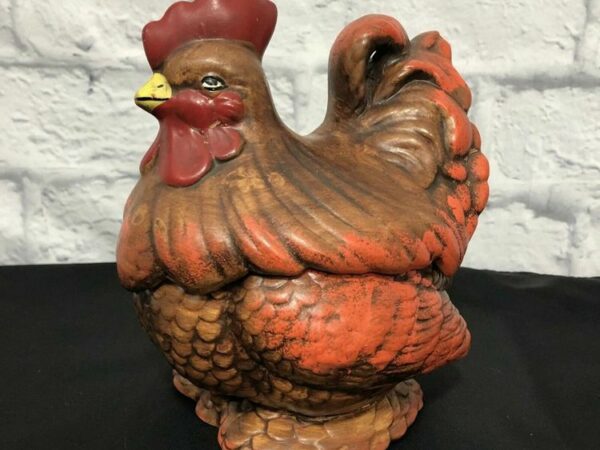Collector plates used to be in high demand and a must-have in households, so they were highly valued. This was somewhere between the 1970s and the 1980s. Prior to that, it was a rapidly expanding market, but there was a downturn that altered the trajectory of collector plate value.
While many collectibles have skyrocketed in value and remain highly sought after even today, others are worth much less regardless of the artist or manufacturer. However, collectors’ plates will always be appealing to many.
Do you have a collector plate that you wish to sell? Would you like to know how much it’s worth? Or are you looking to purchase collectible plates and want to know their value? Continue reading if you fall into any of these categories and want to learn more.
Table of Contents
What Is a Collector Plate?
Today, collector plates are among the most cherished collectibles in the world. They are mostly family heirlooms that depict exquisite artistry on fine porcelain. Their designs can be inspired by anything from nature to abstract art to pop culture, or even holidays like Christmas.
These plates may not be intended for use at the dinner table, but they do add a nice decorative touch. Others buy them for investment purposes as well as sentimental value.
People are usually emotionally attached to them because they may represent a cultural heritage, a unique tribute, or a significant event.
However, the vast majority of plates are nearly without any value, selling for $20 or less.This is in contrast to those that stand out due to their rarity or other significance.
The History of Collector Plates
Contrary to popular belief, plate collecting did not begin in the late 19th century. True, “Behind the Frozen Window,” the first limited collector’s plate by the Danish Company, Bing and Grondahl, made it more popular in 1895. It did, however, begin in 600 A.D.
Before Porcelain Plates
The spoon and bowl were the first known eating utensils in medieval Europe before the invention of the plate. Less privileged citizens used about 6 inches of hard, stale bread to hold hot food and to soak up sauces after a meal.
As it was cut from a loaf, it had rounded edges, which is likely what inspired potters to create plates with a rounded appearance.
During the Yang dynasty (618–907), the Chinese had an abundance of Kaolin clay, the main ingredient in porcelain, and discovered the kiln techniques and glazing processes required to make true or hard-paste porcelain.
Trade routes were opened during the Yuan dynasty (1279-1368), bringing porcelain dinner plates and other porcelain objects to Europe.
Porcelain in Europe (16th Century)
A German potter in Meissen created the first European hard-paste porcelain in 1708. This resulted in the rise of the great European potteries, as it attracted the interest of numerous artists and craftsmen. Some of the potteries founded during this period include:
- Royal Saxon- 1710
- Wedgwood- 1759
- Royal Copenhagen- 1775
- Spode (in England)- 1776
Even though porcelain plates were now produced locally, they were still out of reach for the majority of people. European nobles continued to collect porcelain plates and display them as decorative pieces.
In England, more artists opened factories for commercial purposes, as opposed to the rest of Europe, where aristocratic patronage was more prevalent. They made the porcelain for the middle-class market, popularizing them and making them cheaper.
The 17th Century Rise
Notable manufacturers that began production of porcelain from 1815 to 1898 include:
- Bing & Grondahl
- Haviland
- Bareuther
- Goebel
- Heinrich
- Kaiser
- Rosenthal
- Belleek
- Royal Doulton
- Edwin M. Knowles
- Lenox
In the 1800s, when collecting fancy plates first became popular, there was a wide variety of styles available to suit a spectrum of preferences. The iconic blue-and-white and transfer-printed wares were the most popular designs.
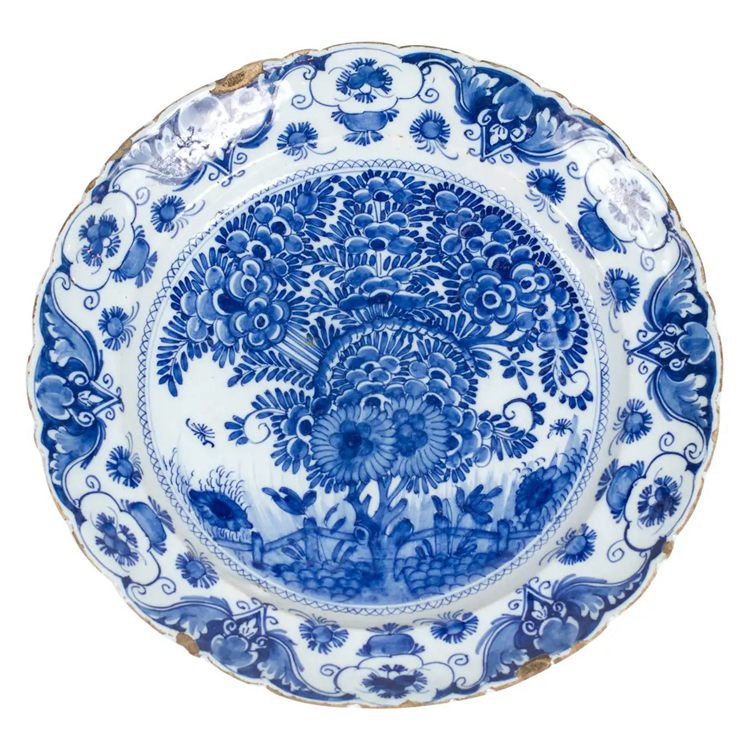
Christmas-themed plates became popular after the release of “Behind the Frozen Window” in 1895. Many European companies produced them, most notably Royal Copenhagen in 1910 with their Rosenthal series.
Bradford Exchange
In 1965, Lalique’s lead-crystal art plate redefined what a collector’s plate should look like. They didn’t have to be made of porcelain or have a Christmas theme.
In 1973, the Bradford Exchange was founded to organize the collector’s market and to provide a trading floor for the buying and selling of collector’s plates.
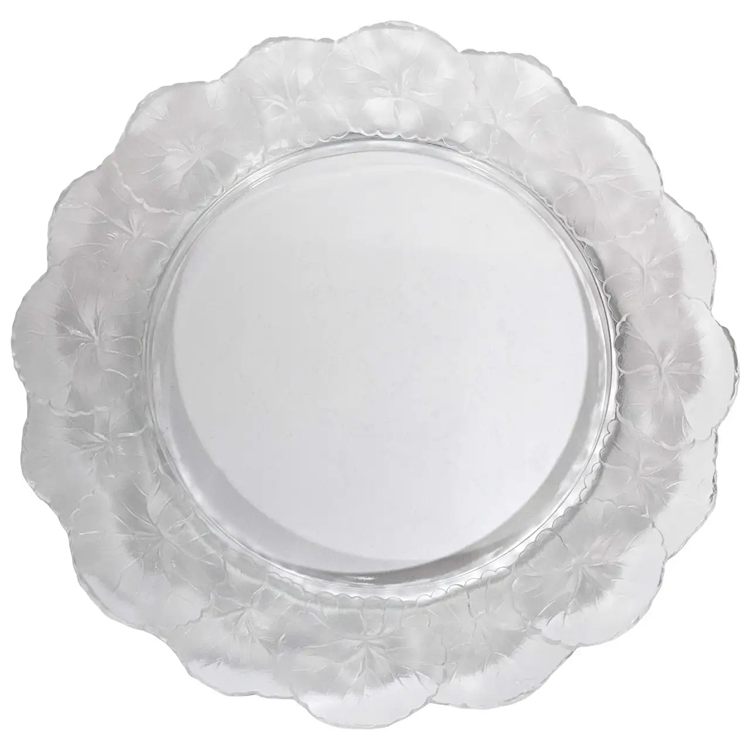
The 15 Most Valuable Collector’s Plates
Although there are an infinite number of beautifully crafted porcelain plates, some of them can be quite expensive. This holds true for some collector’s plates.
In a market so saturated that even plates with designs by renowned artists can be purchased for much less than their assumed worth, these items fetch hefty sums at auction. They are as follows:
1. Pablo Picasso
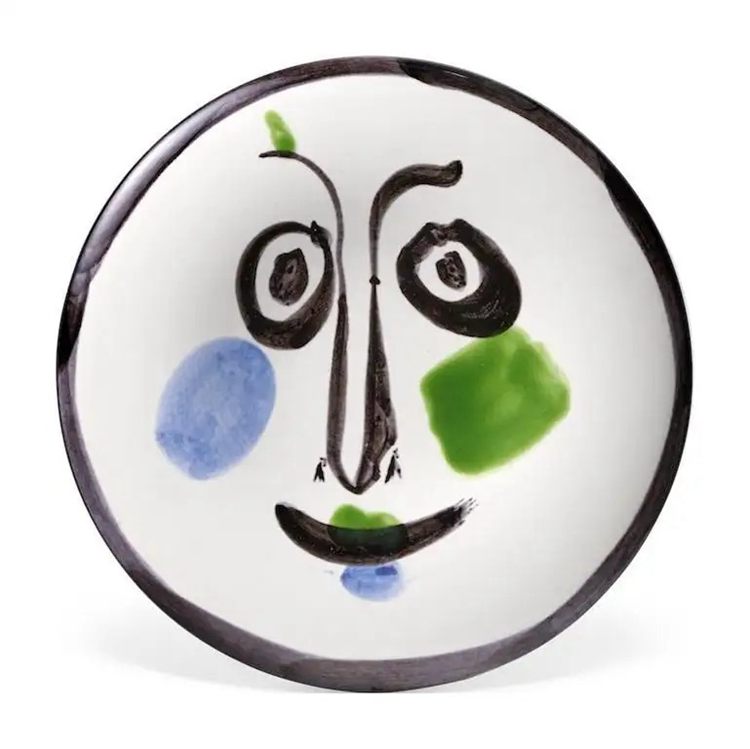
After the Second World War, Pablo Picasso worked as a pottery apprentice in a small shop in southern France called Madoura Pottery. This relationship began around 1947 and ended when he died in 1973. He created more than 500 beautiful ceramics there.
At a 2017 Christie’s London auction, a set of 19 silver plates bearing his signature sold for $1,265,000. This Pablo Picasso Madoura Ceramic Plate “Visage No. 197” is one of 500 in an edition of 500 and is worth $22,000.
2. Behind the Frozen Window, 1895
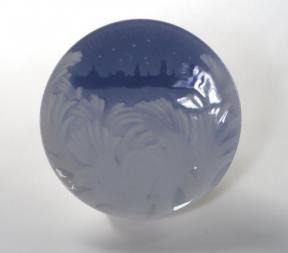
In 1895, Bing & Grondahl produced the first collectible plate, “Behind the Frozen Window.” It was also the first plate with a Christmas theme. The idea came from Henry Bing’s desire to capture Danish skylines on plates.
The plate shows Copenhagen’s skyline from a window at Frederiksborg Castle and other famous buildings. A single piece of this plate costs DKK 28,955 ($3,899).
3. Royal Copenhagen’s Commemorative Plates 1910
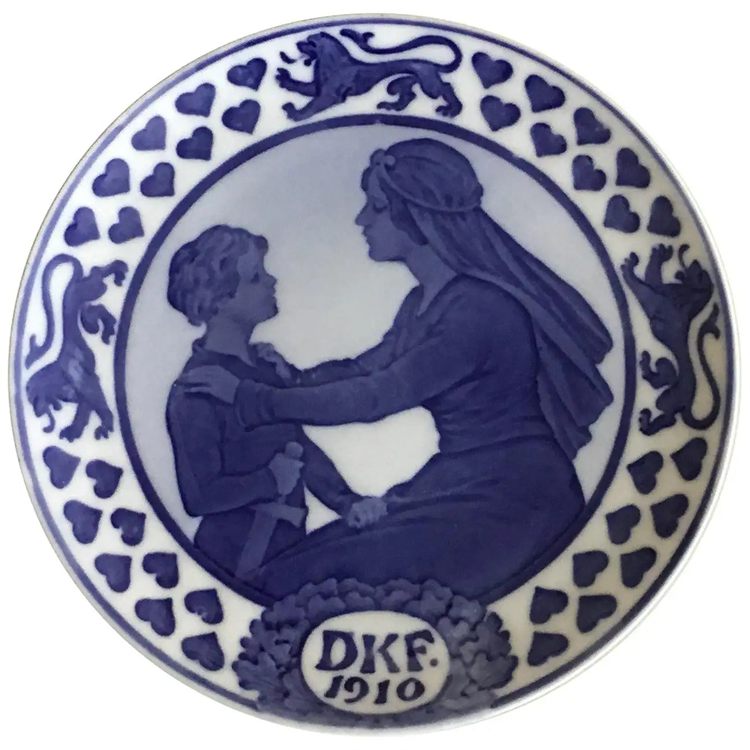
Royal Copenhagen produced collectible plates in collaboration with various artists from 1907 to 1910. From 1907 to 1910, Royal Copenhagen produced collectible plates in collaboration with various artists.
They are produced in limited quantities, and one edition with only five plates was once estimated to cost $21,000.
The plate shown above is in good condition and is listed on eBay for $99. INTER ARMA CARITA, a 1907 Royal Copenhagen Red Cross Memorial plate with only 15 pieces in the series, sells for DKK12,500 ($1,679.79).
4. Royal Warrant Holders’ 150th Anniversary Plate by Royal Doulton
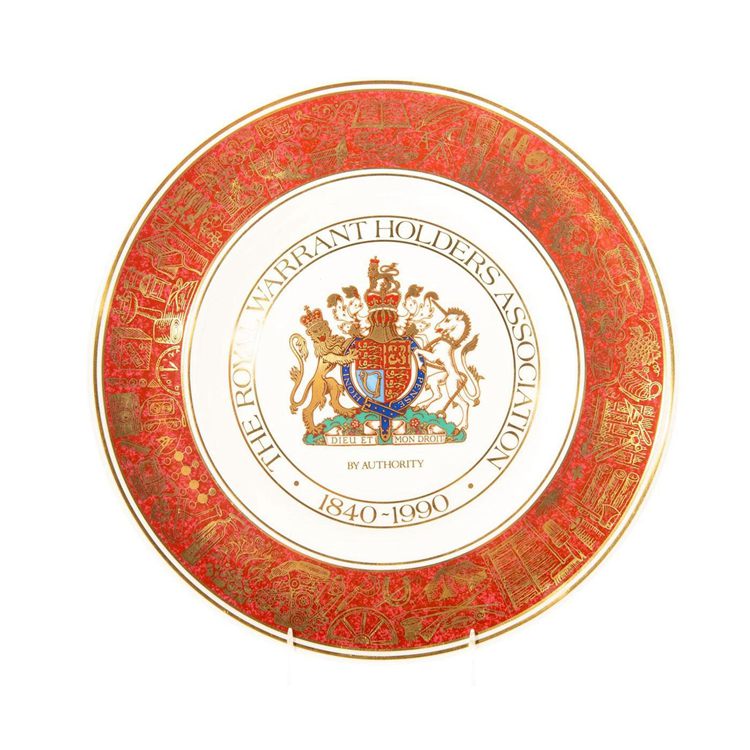
This plate cannot be found for sale because it is a limited edition plate, issued exclusively to its owners and has sentimental value to them. It was originally priced at $2100 per piece.
5. A Chelsea Botanical Moulded Plate 1755
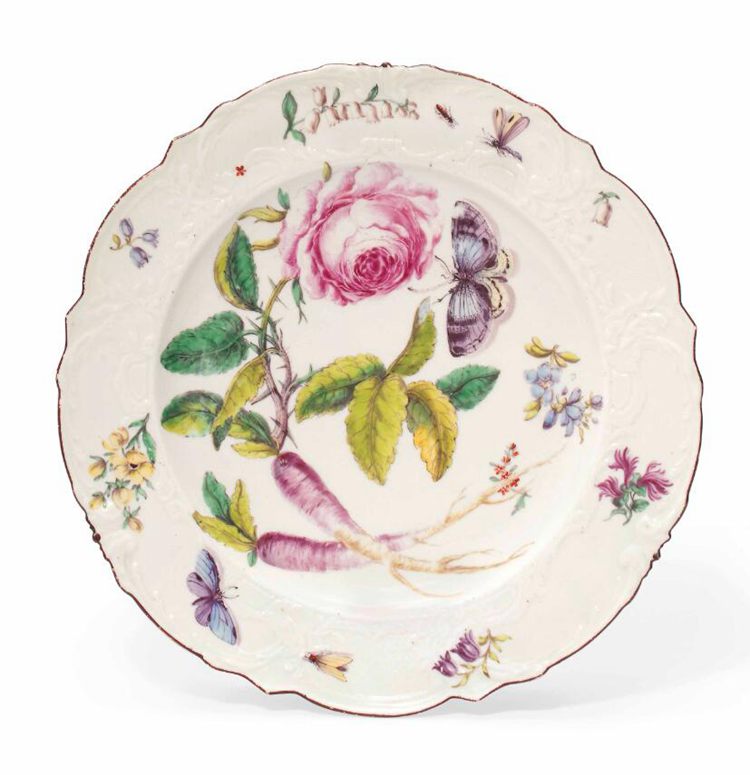
This plate was designed with lifelike fruit and flower specimens, a nod to the 18th century botanical interest which was promoted by naturalists like Sir Hans Sloane. This era in British porcelain was dominated by designs of nature. It was sold at a Christies’ auction in 2012 for £15,000.
Some of this 1755 collection of Hans Sloane Botanical plates are found in the British museum and others are in Private collections. A Chelsea botanical plate of the same year goes for $1,145 on 1stdibs
6. Royal Doulton Early Motoring Charger 1908
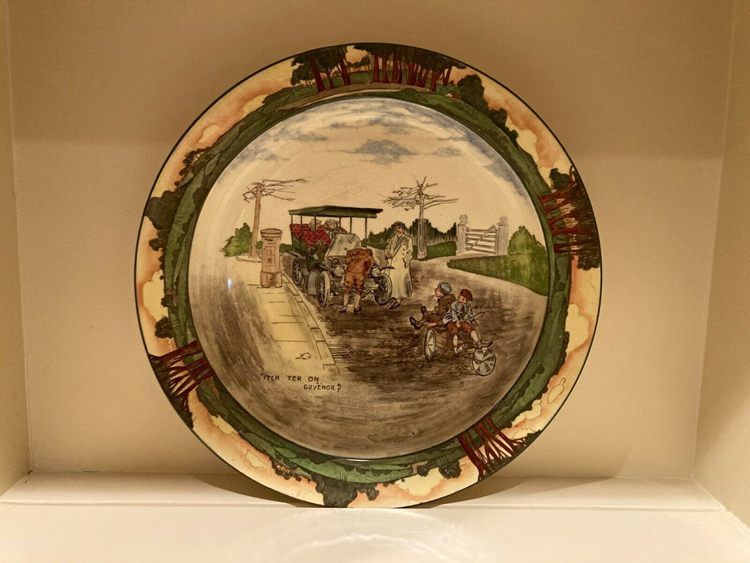
This plate, a Royal Doulton Early Motoring Charger, is listed on eBay for $950 in near-mint condition. Doulton & Company was knighted by Queen Victoria in 1887 and later granted a Royal warrant to be known as Royal Doulton by King Edward the VII.
7. Wedgwood Fairyland Luster Plate Design. Imps on ride by Daisy Makeig-Jones 1920
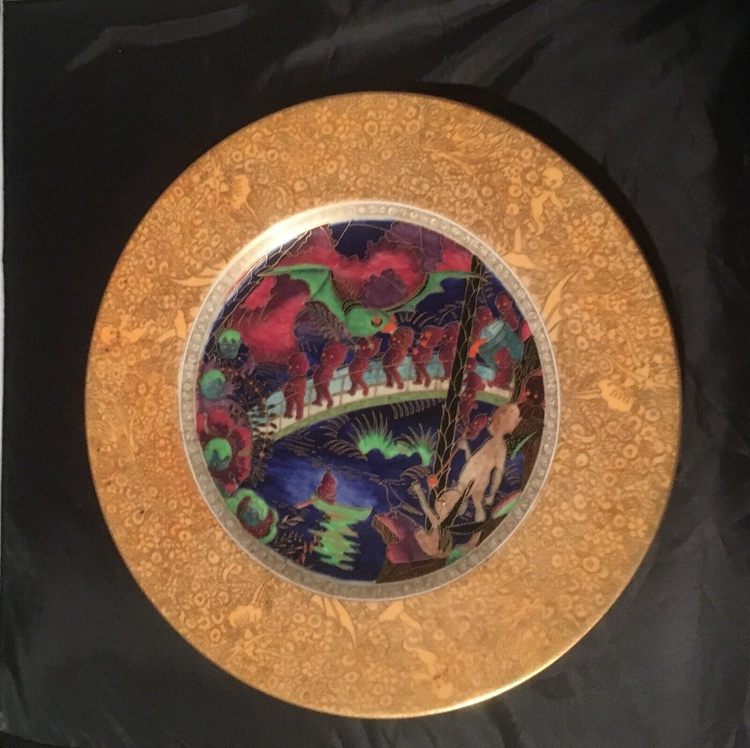
This Wedgwood Fairyland Luster Plate features a hand-painted design by Daisy Makeig-Jones. Each piece is hand painted and has become a sought-after collectible. It is priced at AU 11,600 on eBay.
8. A Wedgwood and Bentley Plate From ‘ The Frog Service’ Made For Catherine The Great 1777
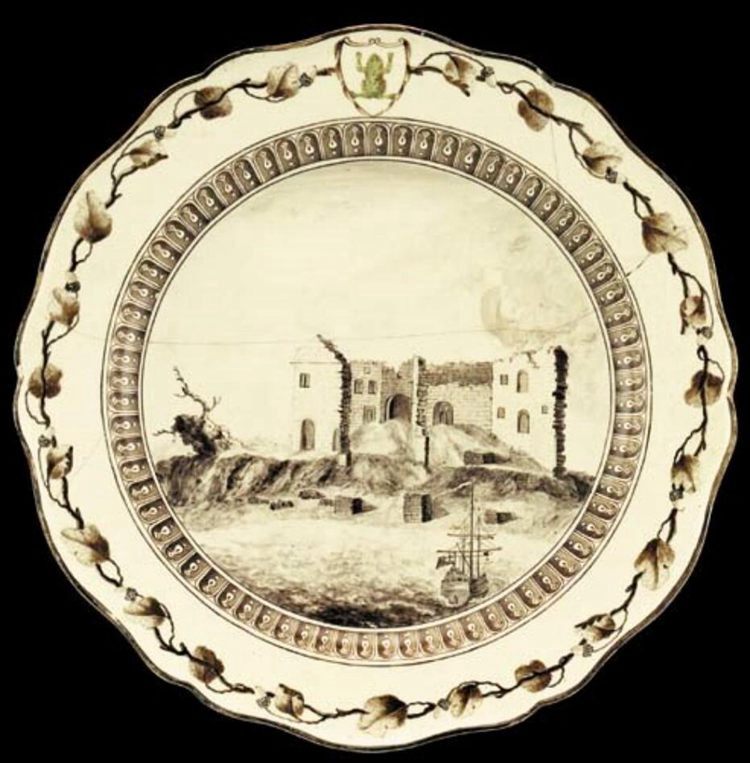
In 2001, this plate sold for £1,645. It is a piece from Josiah Wedgwood’s 952 The Frog Service, which was commissioned by Catherine the Great, the Empress of Russia. Catherine’s love of English landscape aesthetics and gardening is reflected in the collection.
9. Antique Coalport Plate, Jewelled & Hand Painted, Exhibition Quality 1890s
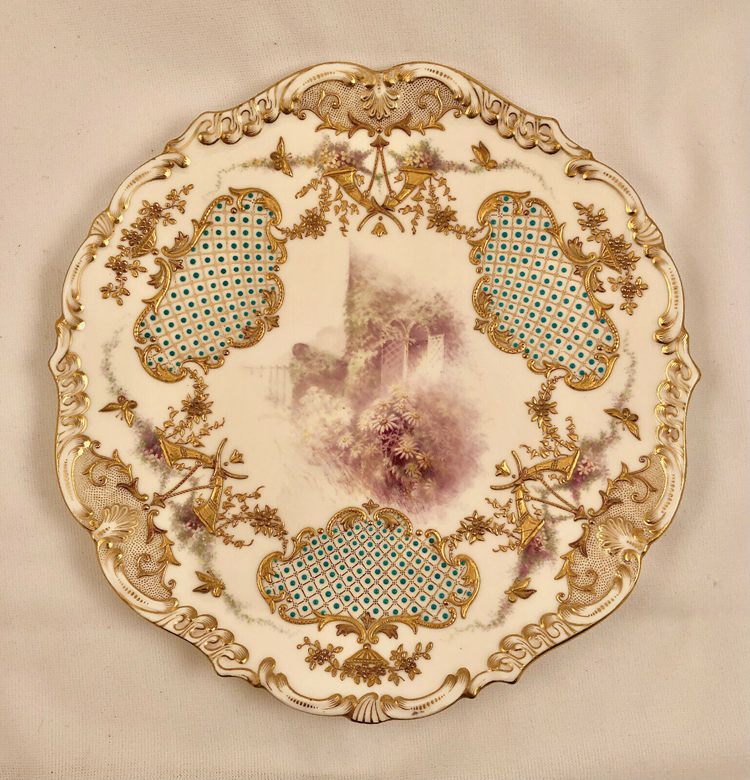
This Coalport plate is in excellent condition and is priced at $1,650 on eBay. Its gilded and gold-trimmed appearance suggests that it was made for display. The center is hand painted as a garden vignette. This piece is stunning and demonstrates masterful artistry.
10. Royal Vienna Austria Hand Painted Porcelain Portrait Queen Louise Plate in Frame 1920
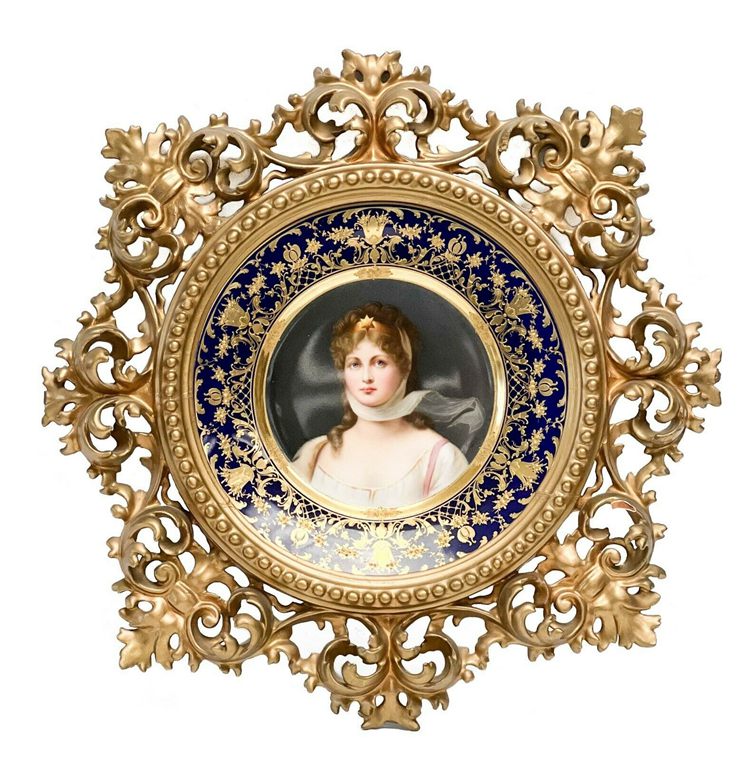
Vienna Porcelain is a product of the Vienna Porcelain Manufactory, the second oldest porcelain factory in Europe. Although private pieces from before 1744 are the most desirable, this hand-painted porcelain portrait plate is available on eBay for $2,551.
11. Five Worcester Porcelain Blind Earl Plate
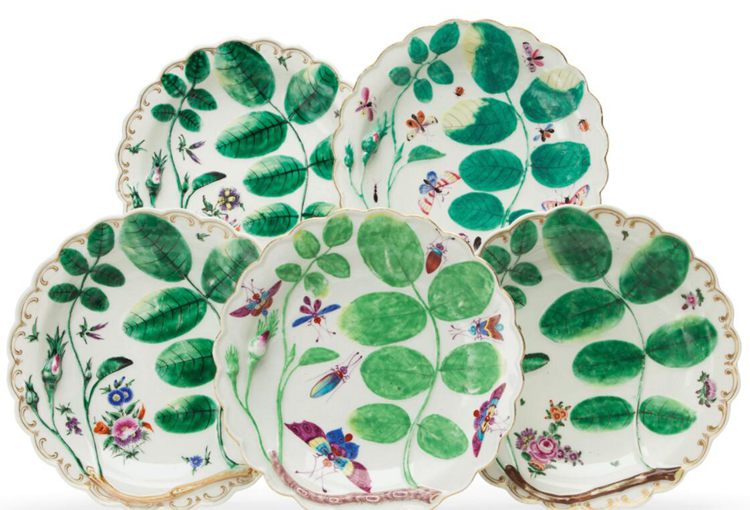
Worcester, an English manufacturer known for its blue and white-painted and transfer-painted wares, produced these beautifully painted plates in 1770.They sold for a total of $13,750 at Christies’ auction in 2019.
12. Wedgwood Creamware Plate From The Prince Of Wales Service 1780
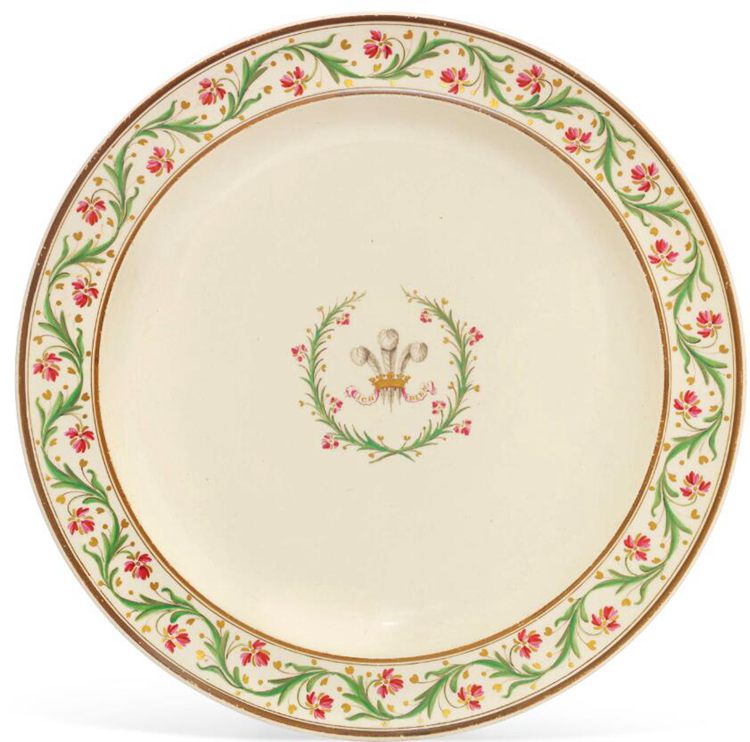
The Royal Collection has retained 30 pieces from this service, including an oval serving dish, for the Prince of Wales. A plate from this collection sold for GBP 2000 in 2017.
13. Chamberlain’s Worcester Regents China Dinner Plate 1820
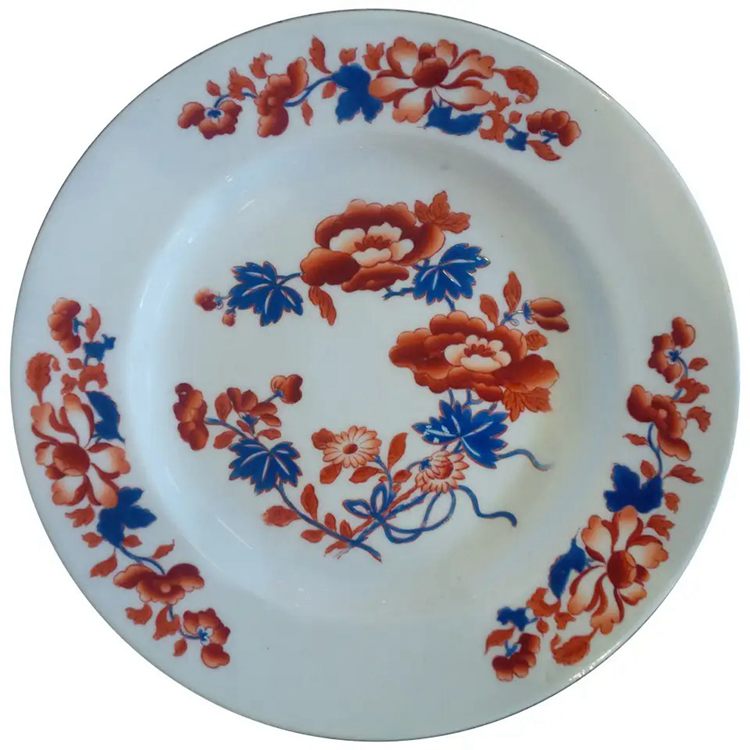
This boldly colored Worcester porcelain has the Japanese Imari style and is a rare English porcelain. It is priced at $980. This plate has a botanical theme, which was popular in the 18th and early 19th centuries.
14. Franklin Mint’s Set of Four Bicentennial Plates 1976
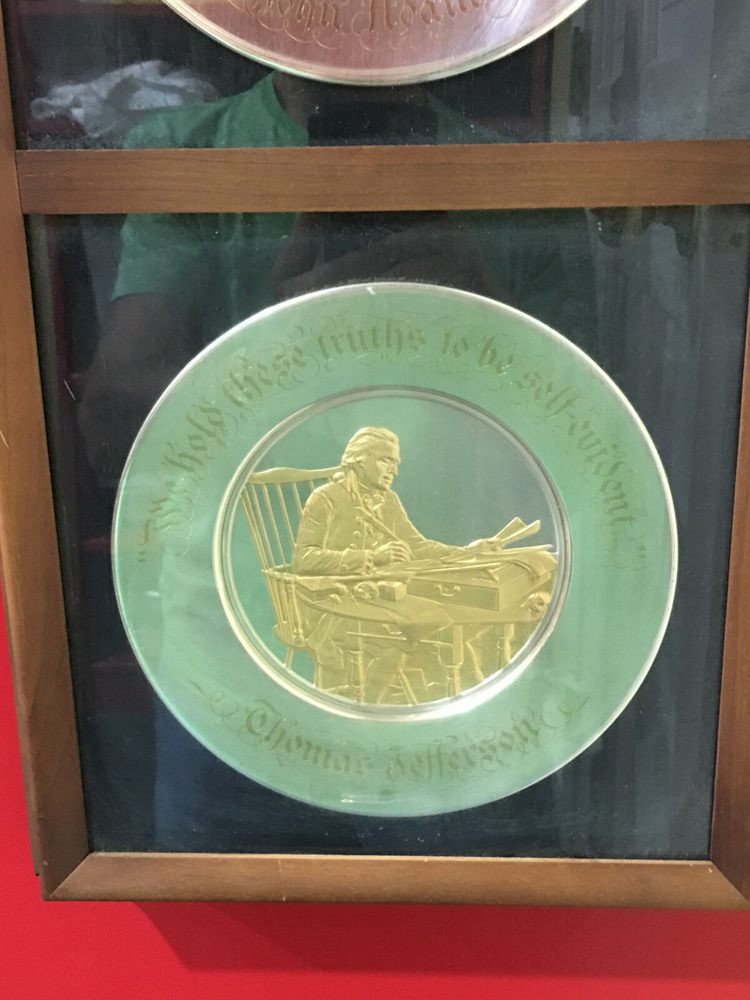
This set of sterling silver with gold plating bears the inscriptions John Hancock, John Adams, Thomas Jefferson, and Caesar Rodney. The Franklin Mint issued it in 1976 to commemorate the United States’ Bicentennial. It costs $1,250.
15. Set of 12 English Porcelain Botanical Plates, Minton, circa 1860
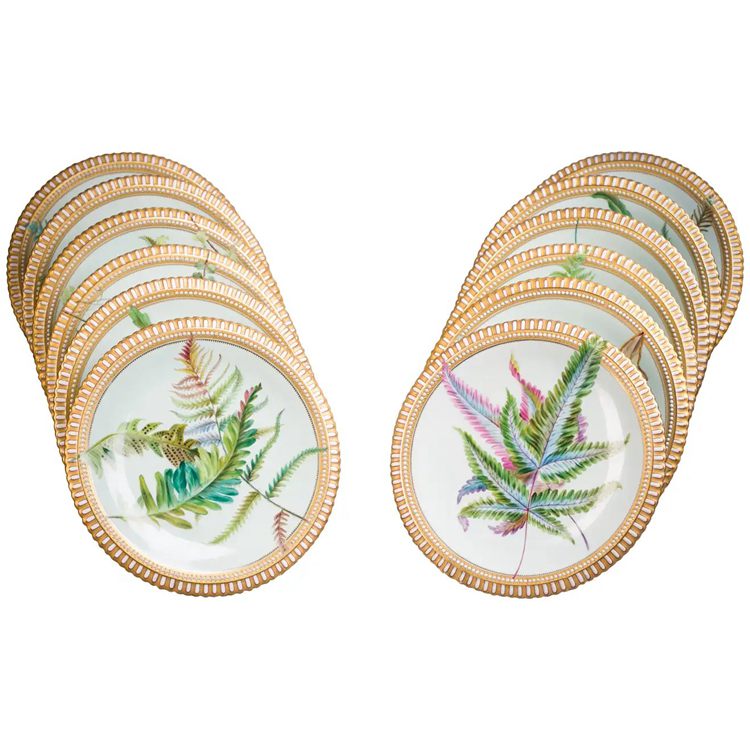
This set of botanical porcelain by Minton is priced at $35,000. In the nineteenth century, Minton was the most popular porcelain supplier in England, with customers including heads of state and embassies.
Determining the Value of a Collector’s Plate
We are sure you’ve wondered if the beautiful collection of plates adorning your walls was worth anything. It is risky to rely on online sites to determine the value of a plate.
The terms “antique” and “vintage” are used loosely these days, calling their authenticity into question. Newer versions of older designs are produced. A great deal of consideration, education, and planning will be required.
In order to determine the value of the collector’s plate you wish to buy or sell, there are several factors to consider.
The following factors influence the value of a collector’s plate:
Manufacture Date
Manufacturers typically stamp the back of the plate with their logo and the date of production. Plates from the 1920s are more valuable and in demand than those from the 1980s and later.
Backstamps were pressed onto the plate surface prior to 1899. This implies that printed stamps became popular beginning in the 1900s. The size of the stamp is also essential for determining its age because older stamps are smaller than more recent ones.
“Trademark” on an English plate indicates that it was manufactured between 1855 and 1886, when “Ltd” was added to the names of English companies.
The lack of a country of origin stamp on the backstamp indicates that it was made before the McKinley Tariff Act of 1891, which mandated it for commercial imports.
Condition of the Plate
The condition of the plate determines the value attached to it. There are categories that may qualify the plate for a particular price range or demand. So, carefully look at the plate to know which of the following categories it falls into.
- Mint Condition:The original box is present and intact, with no signs of use or wear. This indicates that the plate and box have been well-maintained by the owner. Antique plates in mint condition are extremely rare and therefore the most valuable.
- Excellent condition:The plate comes with its original box; however, the box shows signs of wear, whereas the plate is in pristine condition. There should be no discoloration, staining, or cracking on the plate. The box’s condition reduces the price slightly.
- Good condition: The original box of the plate is absent, but the plate shows signs of use. There may be minor discoloration or loss of golf sponging on the plate. This decreases its value in comparison to those in their original box or that have never been used.
- Fair condition: The plate has been used and as a result, it may have crazing, cracks, chips, or discoloration as a result of the use.
Artist
The plates bearing an artist’s work are considerably more valuable than ordinary ones. Some, however, are more valuable than others, whether they are from the same or different arts.
A Ted Grazia plate, for example, might sell for over $1,000, but a Norman Rockwell plate can be found for less than $20 on some online auction sites. Both artists are well-known. In another case, if the artist licenses the plate to several manufacturers, the value may suffer.
Rarity
Some collector plates were made in limited quantities. Although the terms “limited” and “rare” are used loosely when the number of plates produced is in the thousands, some manufacturers only produced a few. This makes them scarce and therefore valuable.
Their scarcity is usually intentional on the part of the manufacturer in order to keep them rare for all time, which ultimately affects their value. If only 10 to 20 were produced, they are highly sought after and sold to the highest bidder.
Subject of Design
Some topics are more important than others. Christmas, for example, is the most popular theme among collectors.
These holiday plates, which were typically manufactured by Bing & Grondahl and Royal Copenhagen, were released before Christmas and, at one point, became an annual tradition.
The Plate’s Manufacturer
Some manufacturers are famous for their plates, with some iconic releases that remain popular among collectors.
- Bing & Grondahl:In 1895, this company created the first collectible plate, “Behind the Frozen Window,” which can sell for up to $2,500 today. Plates from this company that are extremely old and well-preserved can fetch more than $100 on eBay.
- Royal Copenhagen:Famous for their annual Christmas plates, Antique Cupboard offers a 1908 Madonna & Child for $2,200. Other 20th-century plates are available for less than $100.
- Wedgwood:Wedgwood’s iconic blue plates are both decorative and beautiful. They come in a set of 13, but could also be sold individually. These exquisite plates are available on 1stdibs.
- Franklin Mint:Over the years, this company has produced many exquisite plates. Their China plates can be purchased on eBay.
How Valuable is Your Plate?
With knowledge of the factors affecting the value of collector plates, you can estimate the value of your plate prior to seeking a professional appraisal. Here’s what to do:
- Check the condition of your plate. Be truthful about the flaws you discover rather than the presence or absence of the original box.
- Properly identify your plate. Turn the plate over to examine the back stamp. A Bradex number from Bradford Exchange, which appears on various plates regardless of manufacturer or artist, may also be present. It may appear as follows: 84-K19-52 (country – maker – series – issue).
- Perform some research to determine the price of your plate on eBay, Replacement.com, Antique Cupboard, or The Glass Menagerie. You may receive a lower price due to retailers’ overhead costs.
Frequently Asked Questions
1. Who Popularized Plates As Collectibles?
In the 19th century, a Dutch-English nobleman popularized the practice of collecting plates as souvenirs. He had a wide collection of transfer designs that celebrated events and places.
2. Do All Vintage Collector Plates Appreciate In Value?
Not all do. As with all collectibles, it is impossible to precisely predict which will increase in value. However, rare items usually do.
3. How Old Is a Vintage Collectable Plate?
Vintage means that the item is less than 100 years old, usually from 20-99 years. Plates from a century ago, on the other hand, are collectible and can be as valuable as antique plates.
Conclusion
It is essential to know the value of your plate in order to better prepare it for sale, as well as how to determine the value of the plate you wish to acquire.
With the tips in this article, you’ll be better able to keep an eye out for that valuable piece, whether it’s in your own home or in an antique shop nearby. If you have any further questions, kindly leave them in the comments section below.
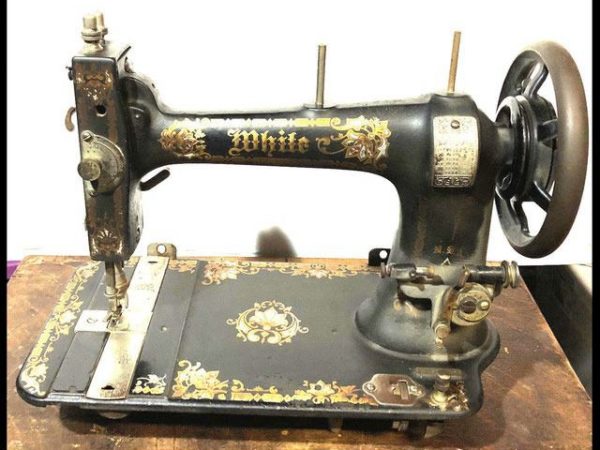
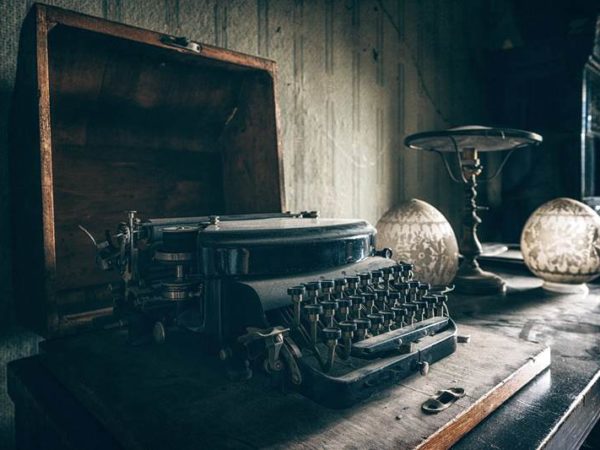
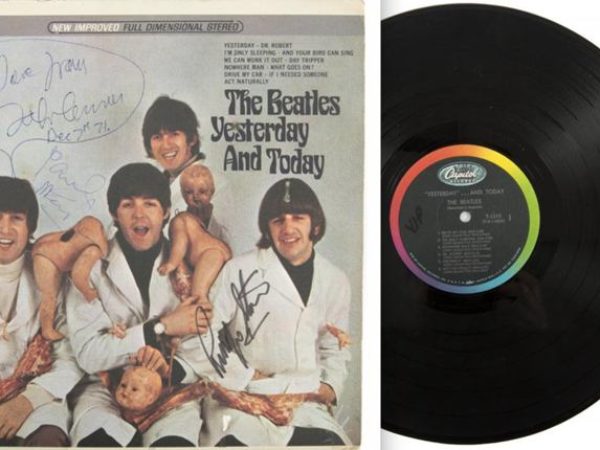
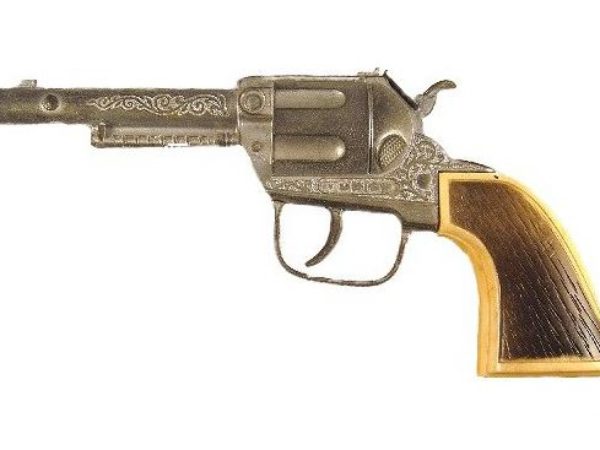
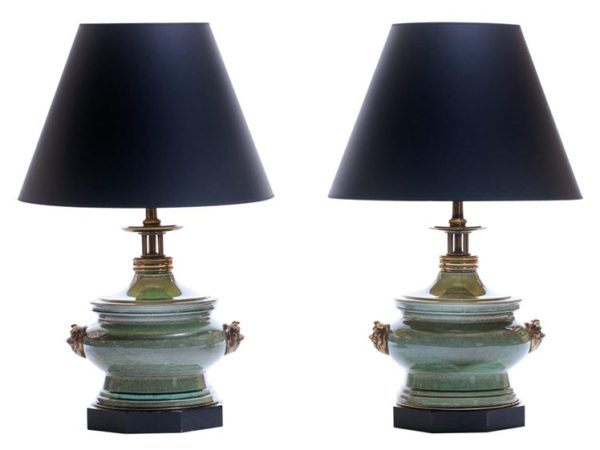
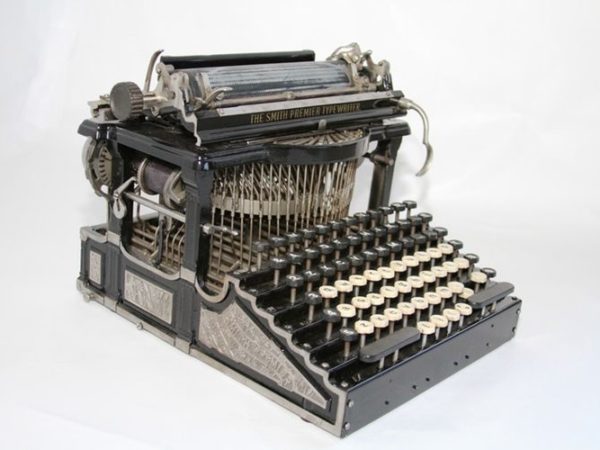
![Vintage Schwinn Bikes: [Types, Identification, and Values]](https://www.txantiquemall.com/wp-content/uploads/2022/05/5.-Schwinn-1967-Ramshorn-Fastback-Stingray-Sky-Blue-vtg-600x450.jpg)
